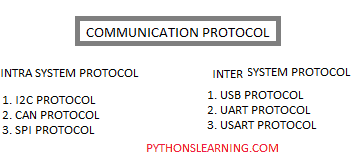

These pipes are a connection pathway from the host controller to the addressable buffer called an endpoint. USB device communication is done through pipes. Each device is given an address by the host, which is used in the data of the communication between that device and the host. USB protocol devices consist of one or more device functions, such as a mouse, keyboard, or audio device for example. For simplicity, look at the root hub and host controller from the abstract view of the ―black box‖ that we call the host. These ports are part of the root hub in your PC. Currently, on your PC, there are multiple USB ports. The root of the hub is an internal hub that connects to the host controller(s) and acts as the first interface layer to the USB in a system. Each controller allows the connection of up to 127 devices with the use of external USB hubs. In USB protocol at least one host controller is present in a host and it is possible to have more than one host controller. Provide and manage power to attached devices.Manage data flow between host and devices.Detect attachment and removal of USB devices.
USB SERIAL COMMUNICATION PROTOCOL DRIVER
The host controller is a hardware chipset with the software driver layer that is responsible for these tasks: The host itself contains two components, the host controller and the root hub. This topology may also include hubs that allow additional to the connection points to the USB protocol system. The USB systems consist of a host, which is typically a personal computer (PC) and multiple peripheral devices connected to them through a tiered-star topology.

The USB protocol is currently regulated by the USB Implementers Forum (USB-IF), which is a nonprofit organization to maintains the USB documents and compliance programs. More recently, plans for USB 3.1 were announced by USB-IF, which will increase the speeds up to 10 Gb/s. With USB 3.0 came a new physical connector as well. That same backward-compatibility was maintained when USB 3.0 was announced in November 2008, providing speeds up to 5 Gb/s. This specification of the revision is backward-compatible with USB 1.1 and 1.0. This revision added a new speed, High-Speed (HS), to the specification making it can capable of 480 Mb/s. The USB protocol not until the release of the USB 2.0 in April 2000 that the next major change occurred. In 1998, USB 1.1 was developed and added some of the clarifications and improvements to the USB 1.0 specification. While Low-Speed was slower than Full-Speed, it was less susceptible to electromagnetic interference (EMI), which made it attractive to the many USB protocol device developers because lower-cost components could be used.

The original specification only included support of the two speeds: Low-Speed (LS), which supported 1.5 Mb/s, and Full-Speed (FS), which supported 12 Mb/s. It all started with the USB 1.0, which was finalized in January of 1996. Over the years, the USB protocol specification has undergone multiple revisions.


 0 kommentar(er)
0 kommentar(er)
